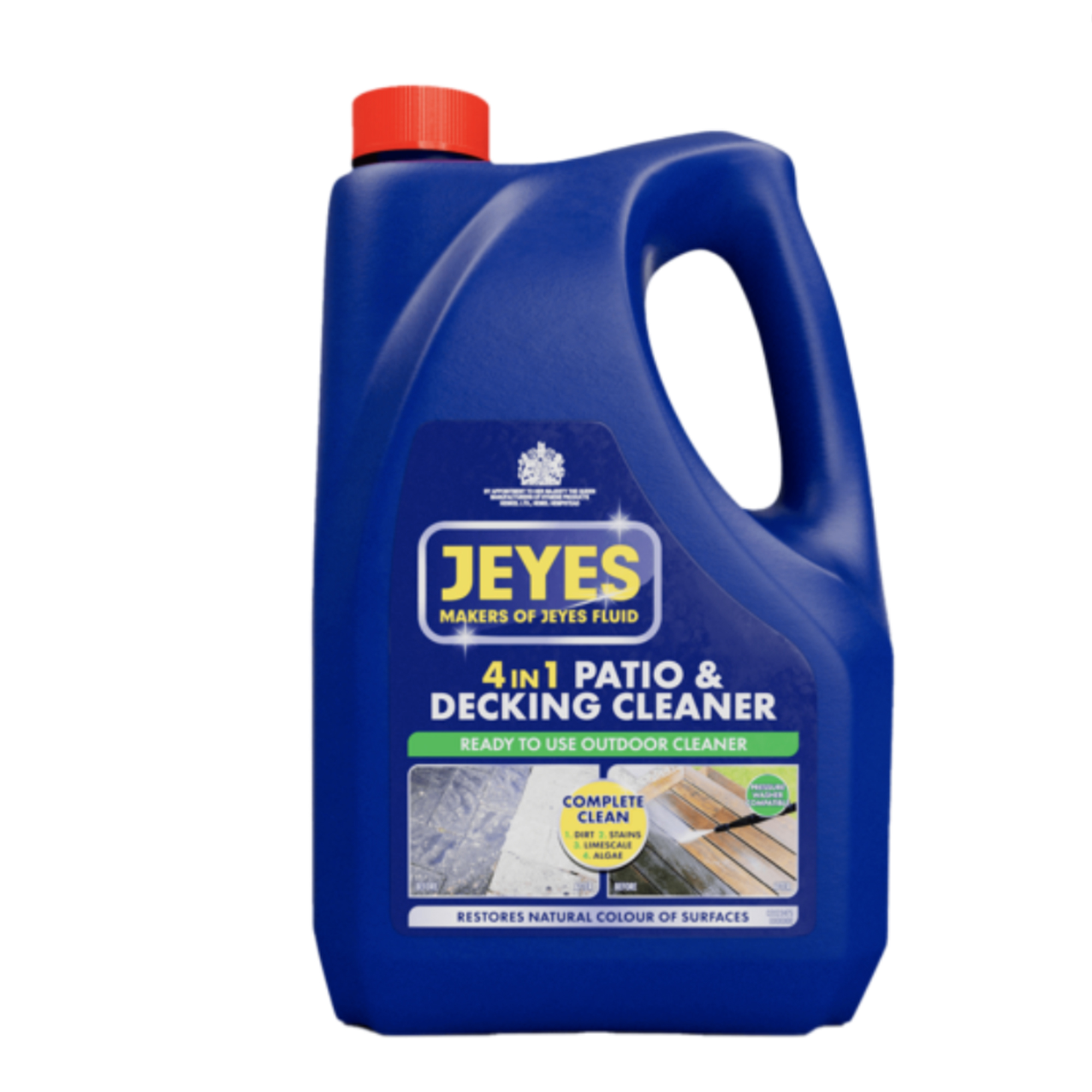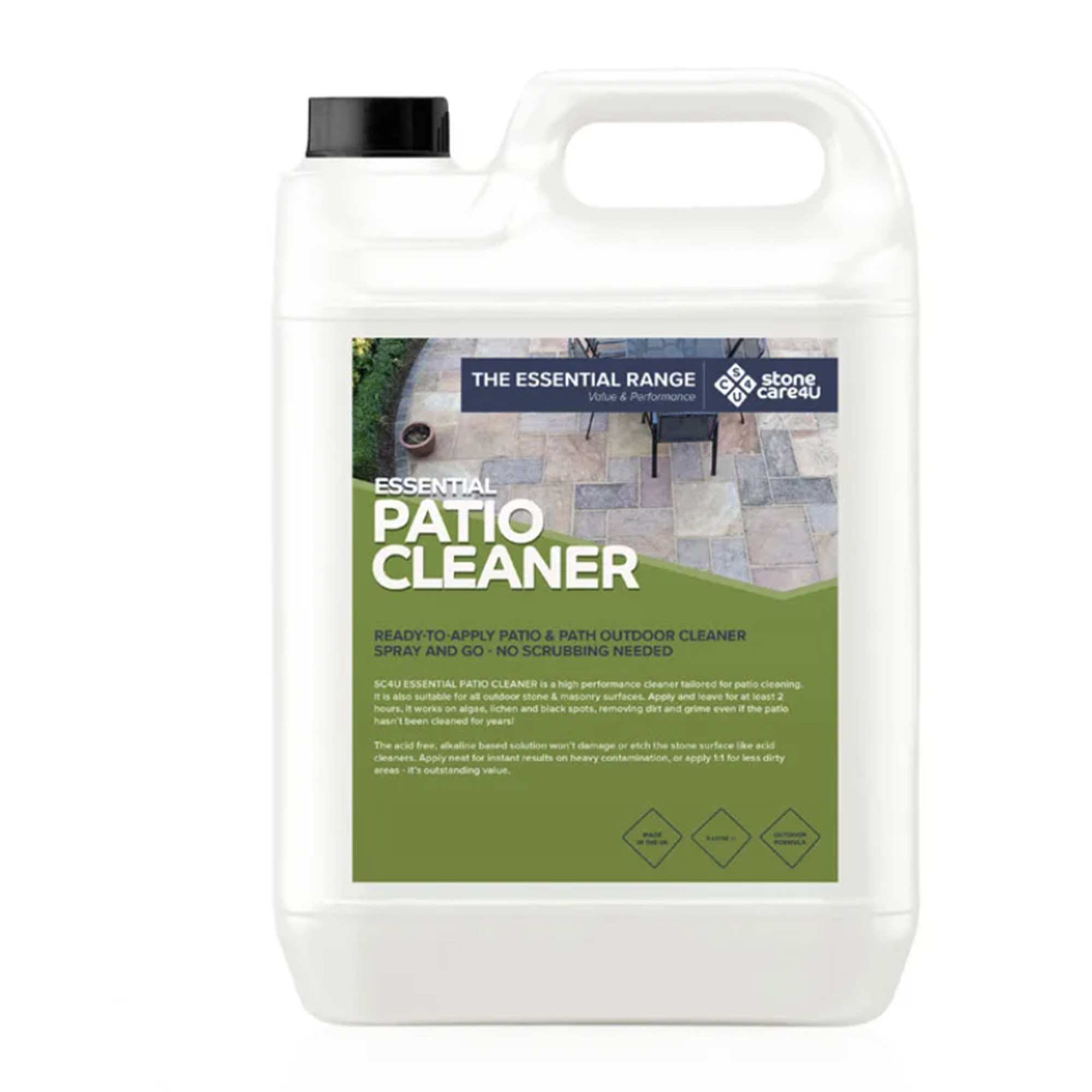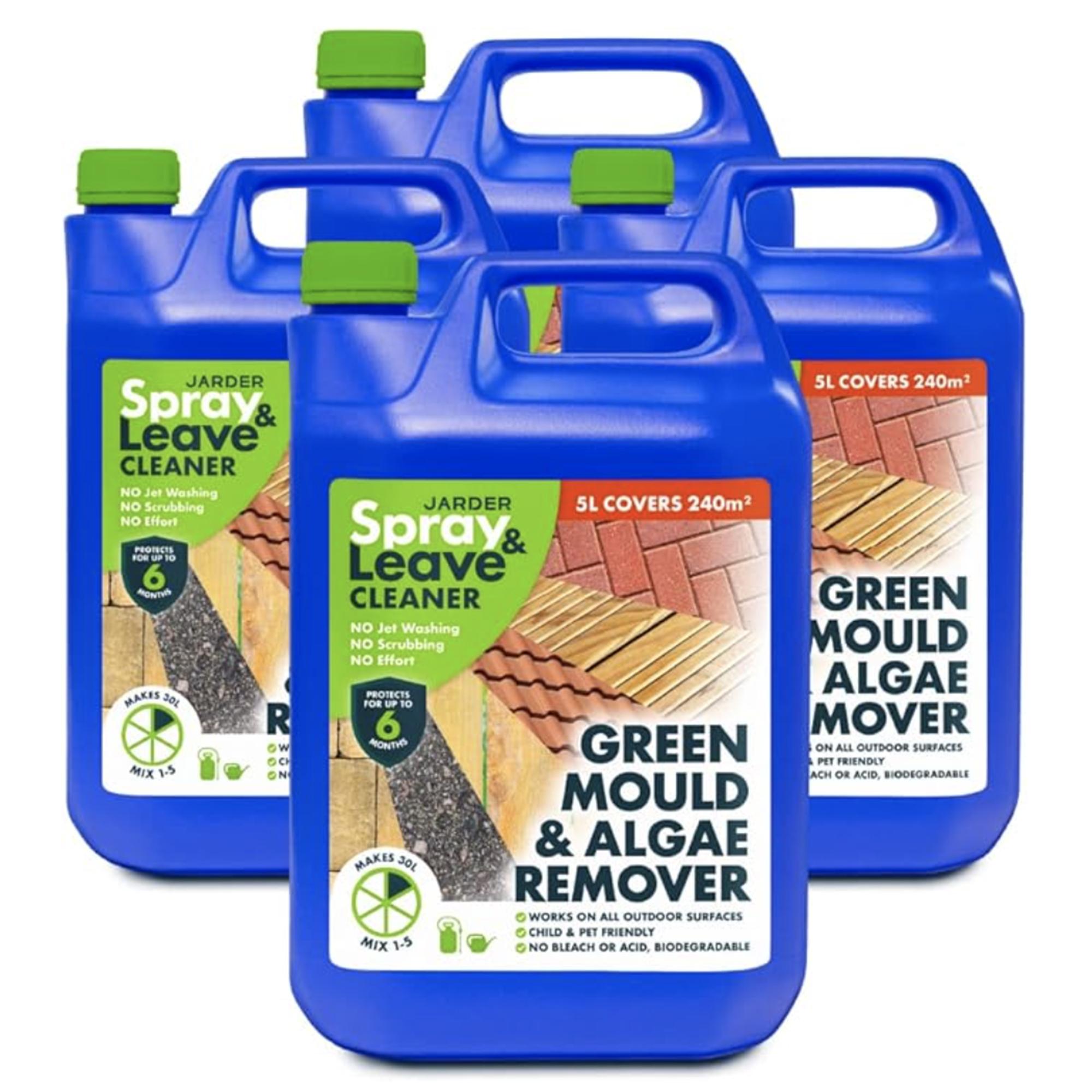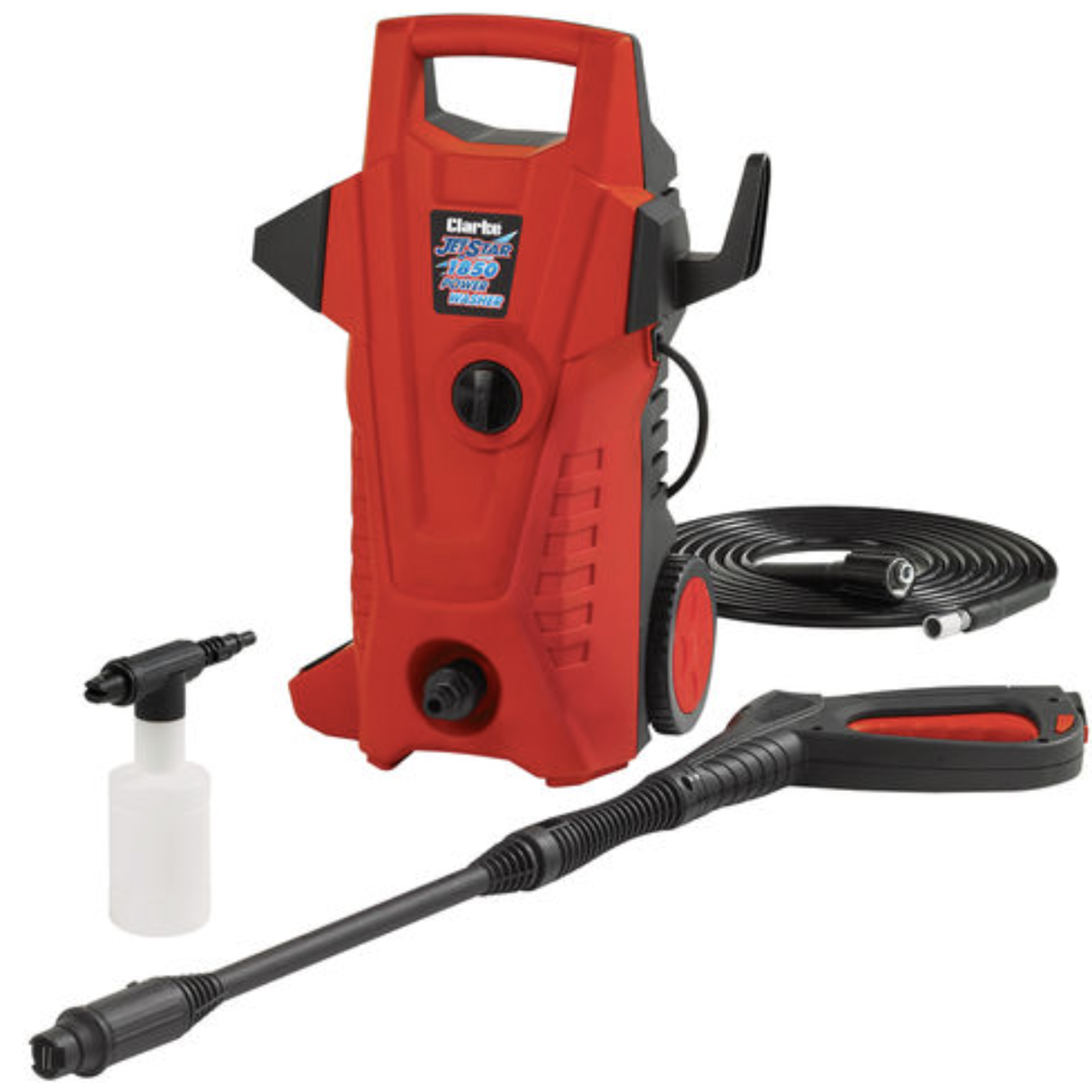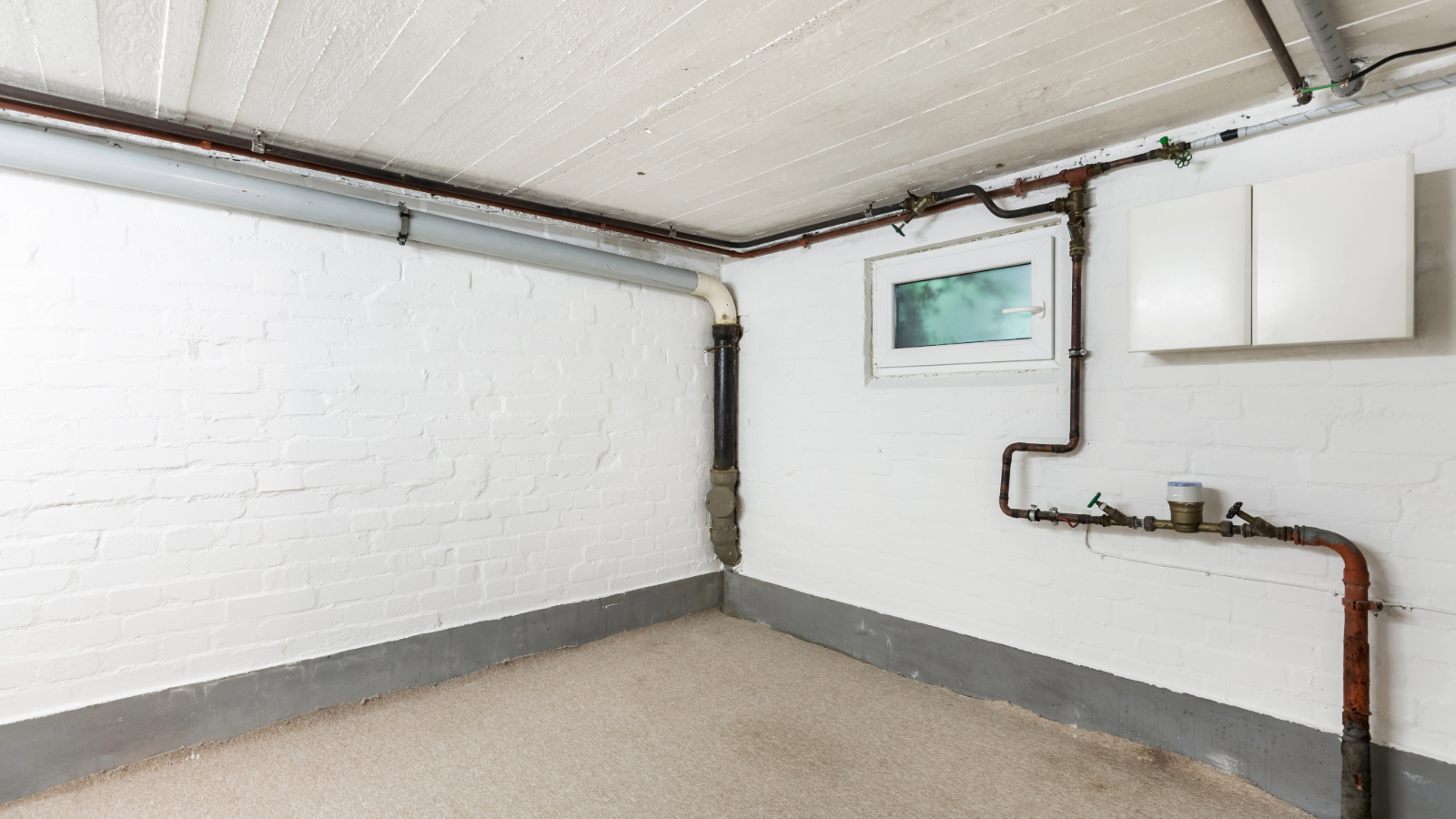How to clean patio slabs with or without a pressure washer to get your home ready for summer
To pressure wash or not to pressure wash. Discover the best ways to get your patio slabs looking like new
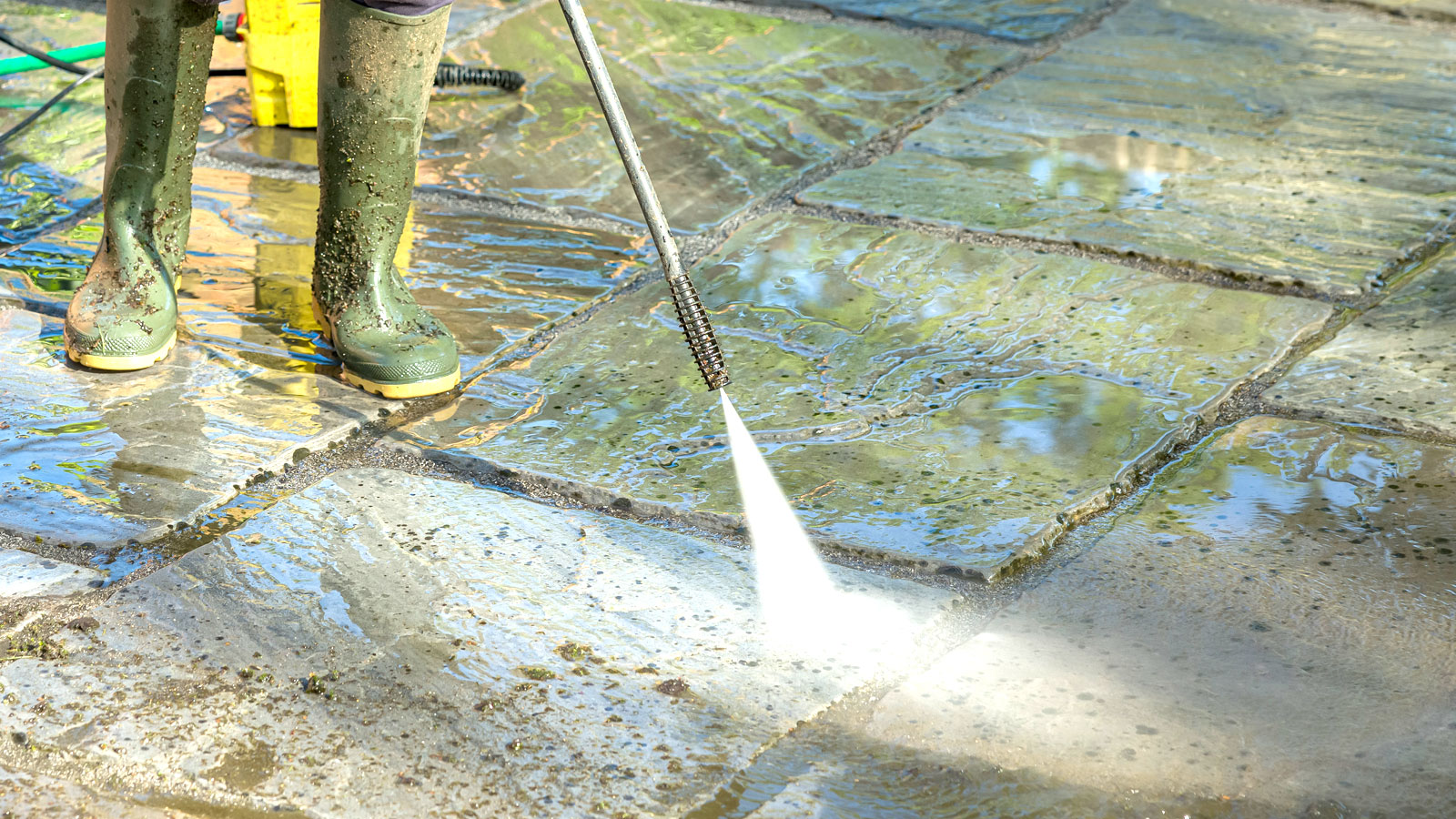
Knowing how to clean patio slabs the right way means you can say goodbye to accumulated dirt and debris and restore your patio to its former glory. But should you use a pressure washer or tackle it with a stiff brush and some serious elbow grease?
Both do a good job, but if you own one of the best pressure washers on the market, it makes sense to use it. Check our section on cleaning with a pressure washer for essential tips. If you don’t, check our pro tips for the manual approach. Whatever way you choose, your patio will very soon be looking its best.
Try these patio cleaners to clean patio slabs

Dobbs is responsible for leading the gardening team at Allan's Gardeners, a landscaping and garden maintenance business that offers patio cleaning.
How to clean patio slabs without a pressure washer
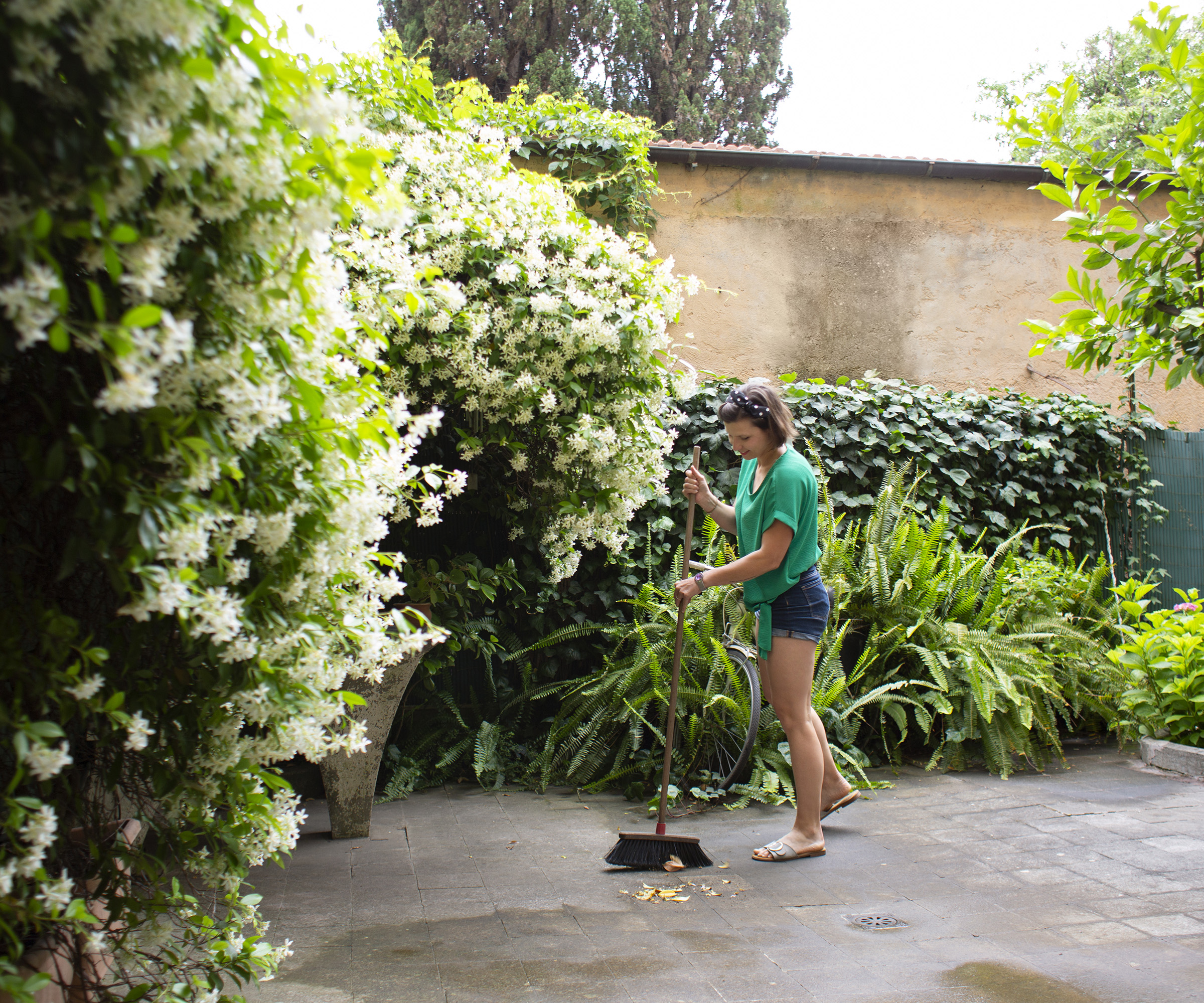
Choosing when to clean your patio slabs is key to success, as Jane Dobbs, Garden maintenance expert at Allans' Gardens, explains, "It's best to clean your patio during a dry spell when it's unlikely to rain. Cleaning a patio on a sunny day lets the surface dry faster." She adds, "Also, the sun disinfects and brightens patios naturally."
Knowing how to remove algae from patio slabs is part of the cleaning process. Here, Dobbs reveals the tools and steps to spruce up your patio slabs.
Tools for cleaning slabs without a pressure washer
- Cleaning detergent of your choice (like this Patio Magic! Concentrate from Amazon)
- Bucket
- Stiff scrub brush
- Garden hose with spray nozzle (like this FANHAO Professional Heavy Duty Garden Hose Spray Gun from Amazon)
- Protective gloves
1. Clear the space
As with cleaning decking, the first step is to remove any furniture, plant pots, or debris from the patio. Clear a space so you can work. To remove loose dirt, leaves, and other debris, sweep or brush the patio. It's easy to do with a stiff-bristled broom or brush.
2. Prepare cleaning solution
To create a cleaning solution, mix warm water with a patio cleaner or detergent in a bucket, following the manufacturer's dilution ratios.
Alternatively, make your own solution. If you don't have any of these, you can make a homemade solution with vinegar, baking soda, or mild dish soap. Note that vinegar is unsuitable for limestone.
Bring your dream home to life with expert advice, how to guides and design inspiration. Sign up for our newsletter and get two free tickets to a Homebuilding & Renovating Show near you.
3. Scrub the surface
Dip a stiff brush into the cleaning solution and scrub the patio surface. Focus on spots with stubborn stains, algae, or moss. A scrubbing pad might help with tough stains.
4. Rinse down patio slabs
Once you're done scrubbing, rinse your patio with a garden hose or bucket of clean water. For a final rinse, use a mop or sponge soaked in clean water. It'll help remove any dirt or soap residue left over.
Try these pressure washers for cleaning patio slabs
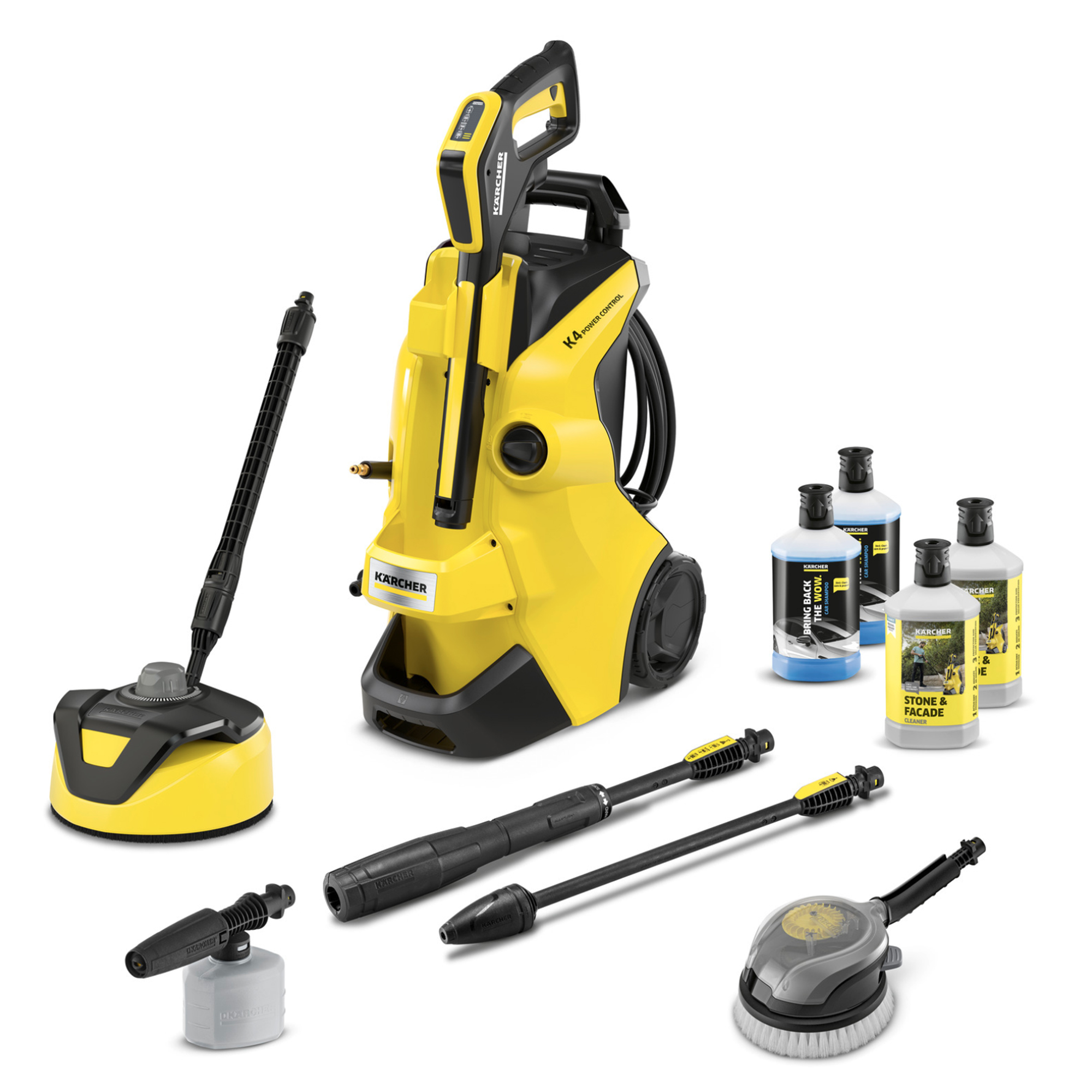
One of Karcher's best-selling pressure washers. Check out our full thoughts on our Kärcher K4 Premium Power Control Pressure Washer Review.

Thomas Goodman has worked as a property and construction expert for MyJobQuote for six years and has worked in the construction industry for over twenty years.
How to clean patio slabs with a pressure washer
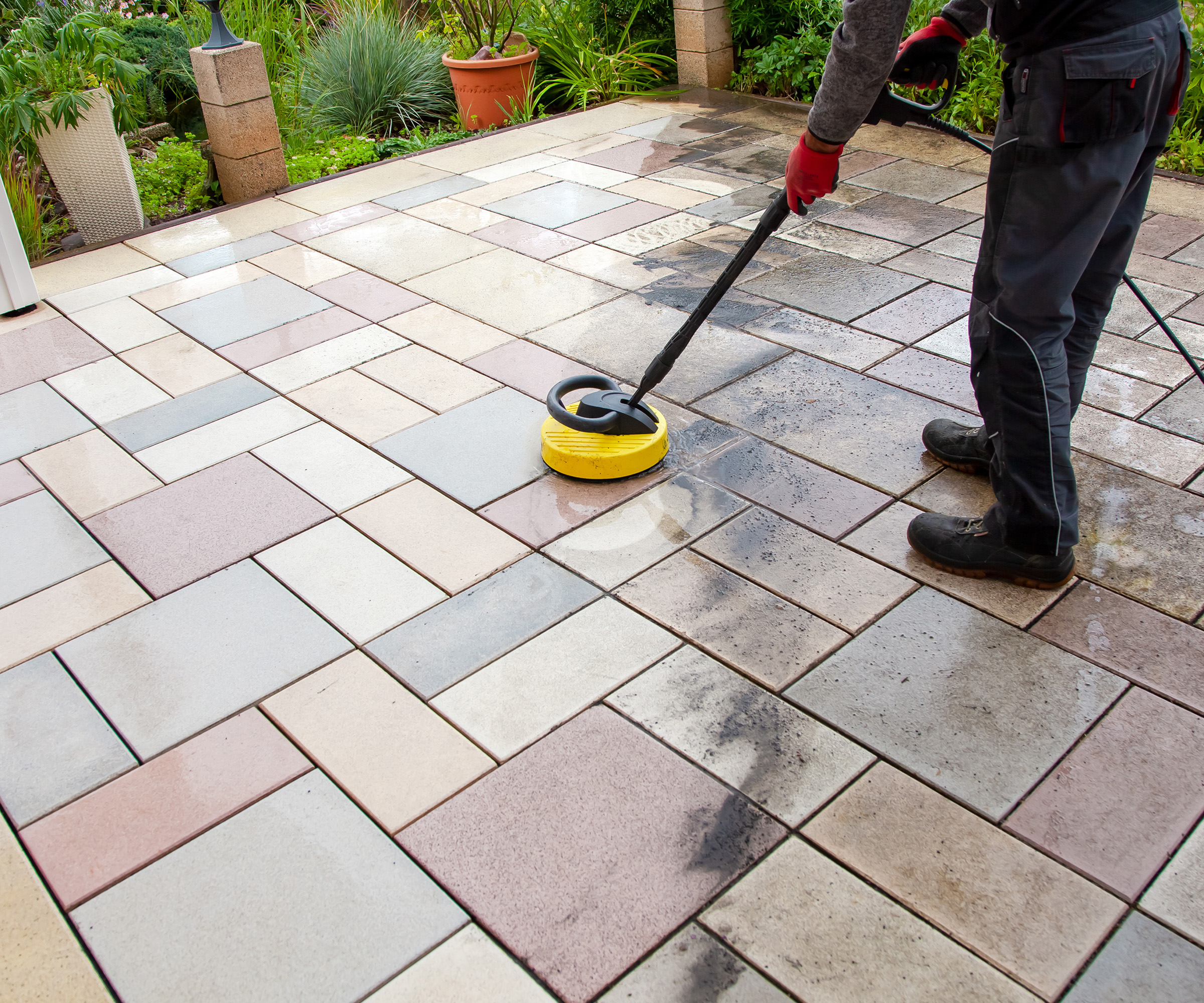
A pressure washer uses water to clean, which makes it a good choice for patios with plants. Thomas Goodman, property expert at MyJobQuote, says, "A pressure washer is a quick and easy way to clean a patio." He adds, "It's also a good choice if you have plants nearby or a household with kids or pets."
Here, Goodman reveals the tools you'll need and steps to take for a fresh, clean patio.
Tools for cleaning slabs with a pressure washer
- Old clothes and shoes to wear
- Stiff broom
- Work gloves
- Goggles
- Pressure washer
- Lance or rotary brush attachment
- Water supply
- Cleaning fluid (optional)
1. Clear furniture
Remove pots and other items off your patio, so you don’t need to stop mid-way through cleaning. Move them a good distance away to ensure they don’t get blasted or splashed by the pressure washer.
2. Sweep away debris and set up pressure washer
Get a stiff broom and sweep up the loose dirt and garden debris. Next, hook up your pressure washer (see the best Karcher pressure washers) to the water supply and connect a suitable attachment such as a lance or rotary brush. If your patio is really dirty, you may want to add detergent to the machine or spray it over your patio. But in most cases, this shouldn’t be necessary.
3. Adjust pressure washer pressure
To avoid damaging your slabs, you may need to adjust the pressure. If you’re using a lance, be sure to hold it at an angle and away from the surface of the patio, so you don’t cause pitting. As natural stone patios are particularly susceptible to this, you do need to take care with slabs made from materials such as limestone and sandstone.
4. Work across patio
Work methodically across the patio by going from one end to the other. This will ensure you don’t miss any sections. If you’re using a lance, adopt a sweeping motion to avoid blasting your slabs too heavily.
5. Mind the joins
You also need to be careful as you work over the joins of the slabs as you can damage the mortar or push out the grouting compound. You may find working diagonally across the slabs minimises this risk.
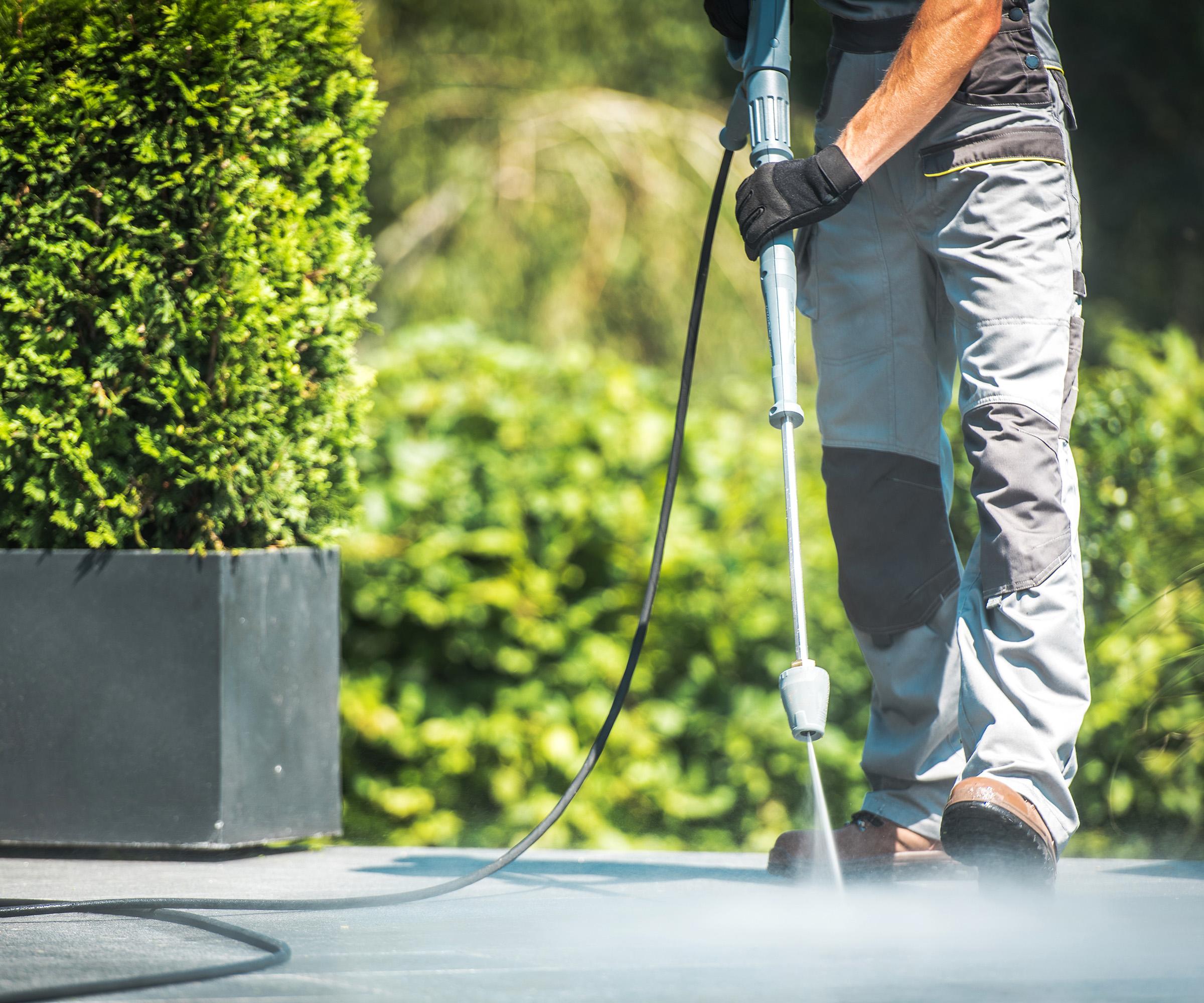
FAQs
When is a good time to clean a patio?
Choosing the right time to clean a patio will make life easier for you and ensure your patio stays clean for longer. Goodman says, "Once the weather has warmed up, you can be sure your wet patio won’t freeze over." He adds, "Cleaning it during springtime will mean it’s ready to enjoy over summer."
Goodman continues, " Try to choose a dry day. This will make it easier to sweep up the debris from your patio."
A dry, warm day will also be better for any chemicals you are using as Dobbs points out, "Extreme heat or cold when cleaning your patio will affect the effectiveness of cleaning solutions." She adds, "Pick a day with calm winds to make cleaning easier. You don't want to clean a patio on a windy day, as debris and cleaning solutions might get blown all over."
Once you finish cleaning the patio, try some new patio edging ideas to complete the transformation.
What is the best DIY patio cleaner?
According to Tom Clifford, from Gardenstone, washing powder makes an effective and affordable DIY solution for how to clean patio slabs:
"The chemicals in the washing powder are strong enough to remove dirt, moss and stains without causing any damage to the surface of the paving." He adds, "Simply, create a mixture of warm water and washing powder, then pour it over the surface of the patio and leave to sit for ten to fifteen minutes."
To clean it, Clifford says, "Use a gentle bristle brush to scrub the surface of your patio from the outside inwards." He adds, "Once completed, make sure to rinse the mixture off thoroughly."
But Goodman does add a word of warning, "As with all cleaning solutions, you should ensure your patio stone can sustain the type of chemicals you are using on it. More delicate stones, like limestone, can easily be damaged, so I recommend testing the solution on a small area of your patio first."

Tom has over 13 years of experience in the garden landscaping business. He is an expert in garden design, paving and maintenance.
Can you clean patio slabs with washing up liquid?
Yes, you can use washing-up liquid to clean patio slabs. Molly Woodward-Moor, tile and stone expert at Stone Superstore, says, "Diluting household washing-up liquid in warm tap water is gentle enough not to damage your tiles, yet effective at lifting dirt and stains."
She adds, "Stubborn marks may require additional elbow grease, but better yet, consider finishing your clean with a jet wash over your tiles for an efficient, low-effort way to get them back to looking fresh and pristine."
However, if you have stubborn dirt and stains, you may need to use a specialist cleaner to get the job done.

Molly Woodward-Moor is an interior designer and creative director at Stone Superstore, an online porcelain tile and natural stone tile business. She has a wealth of design and home development expertise alongside her First Class BA (Honours) degree in Interior Design.
Does white vinegar clean paving slabs?
White vinegar works well on some paving slabs but can damage others, explains Woodward-Moor. "White vinegar, mixed with equal parts of water, is an effective non-toxic cleaning solution for cleaning patio slabs that is more of an environmentally friendly option over harsh chemicals."
However, she adds, "Take precautions when using this solution on tiles - if used excessively, the acidity can lead to eventual surface damage on some material types.
She warns, "Do not use white vinegar on natural stones like limestone, marble, or travertine. These stones will react to the vinegar's acidity, leading to burning or etch marks on the surface."
Is bleach good for cleaning paving slabs?
Woodward-Moor shares that bleach is best avoided when cleaning patio slabs. "Bleach is a harsh chemical that can damage natural stone tiles by slowly stripping the surface, which can then permanently mark or weaken your tiles."
She adds, "Even though some paving tiles are extremely durable, it’s still best to avoid using chemical cleaners containing ammonia, bleach, or acids, which can slowly fade tile and grout colour."
And bleach can affect more than just your patio slabs. As Woodward-Moor points out, "Using bleach is no good for organic gardening; it's extremely harmful to the environment, so it's best kept for indoor surface use, away from natural wildlife."
A clean, pristine patio deserves special attention. Check out our patio cover ideas, patio planting ideas, and patio lighting ideas to create a place to relax and enjoy all year round.

Teresa was part of a team that launched Easy Gardens in 2018 and worked as the Editor on this magazine. She has extensive experience writing and editing content on gardens and landscaping on brands such as Homes & Gardens, Country Homes & Interiors and Living Etc magazine. She has developed close working relationships with top landscape architects and leading industry experts, and has been exposed to an array of rich content and expertise.
In 2020 Teresa bought her first home. She and her partner worked alongside architects and builders to transform the downstairs area of her two bedroom Victorian house in north London into a usable space for her family. Along the way she learned the stresses, woes and joys of home renovation, and is now looking to her next project, landscaping the back garden.
